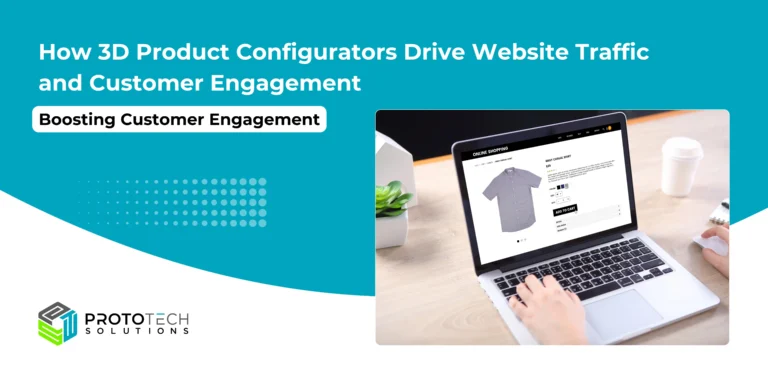Top 10 Powerful Tools Driving Sales Collaboration in the Furniture Industry

The global furniture industry is on a growth trajectory, driven by personalization, e-commerce expansion, and technological innovation. Reports indicate that the global furniture industry is experiencing substantial growth, with the market size estimated at approximately USD 736 billion in 2025, and forecasts predicting it will reach over USD 1.1 trillion by 2034.
This expansion is fueled by increasing demand across commercial and residential sectors, booming real estate development, and evolving consumer preferences. As competition intensifies and product complexity rises, seamless sales collaboration has become a critical success factor for furniture brands striving to capture greater market share and streamline supply chains.
Why Sales Collaboration Is Essential for Furniture Brands?
Effective collaboration between sales and manufacturing teams is more than just sharing information; it’s the backbone of sustained market success in the furniture industry. Collaborative practices empower brands to quickly adapt to shifting trends, speed up new product launches, and deliver tailored customer experiences. When sales teams work in harmony with design and manufacturing units, they can:
- Ensure product offerings align with actual market needs and evolving consumer tastes.
- Synchronize supply chain operations, reducing delays and minimizing overstock through shared inventory and sales data.
- Drive co-created innovations that are both functional and desirable, via continuous feedback and brainstorming sessions with partners like interior designers.
- Build trust and competence through joint training, leading to stronger brand advocacy and better post-sale support.
Ultimately, collaborative sales strategies foster agility, transparency, and overall competitiveness, positioning furniture brands to thrive in today’s dynamic marketplace.
Top 10 Tools for Sales and Manufacturing Teams to Work Together
Leading companies utilize a suite of digital tools to support cross-functional collaboration, boost efficiency, and maximize sales outcomes. Below are the top 10 powerful tools reshaping how furniture brands coordinate efforts from the showroom floor to the production facility.
1. 3D Product Configurator
A 3D Product Configurator enables real-time visualization and customization of furniture items, helping sales reps and customers interactively explore finishes, dimensions, and materials. This tool bridges the gap between marketing concepts and manufacturing realities:
Key Features:
- Real-time 3D visualization of furniture products.
- Options for customization (colors, fabrics, dimensions, finishes).
- Integration with e-commerce platforms and CRMs.
- Mobile and desktop compatibility.
Benefits:
- Reduces customer confusion and returns.
- Speeds up sales by offering clear product previews.
- Enhances customer satisfaction with personalized shopping.
Leading solution providers, like ProtoTech Solutions, are elevating sales cycles by supporting seamless integration and superior UX for furniture brands.
Know more: https://prototechsolutions.com/3d-services/3d-product-configurator-for-furniture/
2. CRM Software: HubSpot
Customer Relationship Management (CRM) platforms like HubSpot enable sales teams to track leads, manage pipelines, and maintain customer communication effortlessly. For furniture brands, this means tracking high-value B2B clients, automating follow-ups, and integrating email campaigns, all in one dashboard.
Key Features:
- Centralized customer database.
- Email and marketing automation.
- Sales pipeline and deal tracking.
- Real-time reporting and analytics.
Benefits:
- Improves lead nurturing and client retention.
- Enables sales teams to work more efficiently.
- Provides customer insights for better decision-making.
3. Configure-Price-Quote (CPQ) Tool
A CPQ tool automates complex pricing models, ensuring sales reps can quickly generate accurate quotes for customized furniture orders. This reduces the chances of human error, avoids pricing delays, and creates a smoother customer journey.
Key Features:
- Automated price calculation.
- Integration with CRM and ERP platforms.
- Approval workflows for quotes.
- Preconfigured pricing models.
Benefits:
- Reduces pricing errors.
- Speeds up quotation processes.
- Enhances customer trust with transparent pricing.
By automating calculations and document workflows, CPQ tools help teams convert more quotes into closed sales.
Know more: https://prototechsolutions.com/3d-services/cpq-product-configurator/
4. Operations & Workflow Management: Monday.com
Furniture sales involve multiple departments, from sales teams handling clients to production units managing manufacturing schedules. Monday.com enables brands to streamline workflows, assign tasks, and track project progress in real time. Its visual boards make collaboration intuitive, ensuring deadlines are met without bottlenecks.
Key Features:
- Visual boards for task management.
- Time tracking and automation.
- Integration with tools like Slack, Google Workspace, and Zoom.
- Real-time progress tracking.
Benefits:
- Improves workflow transparency.
- Eliminates bottlenecks in project execution.
- Keeps cross-functional teams aligned.
5. Enterprise & Supply Chain Collaboration: SAP
For large-scale furniture brands, SAP’s enterprise solutions ensure supply chain transparency and financial management. By providing real-time visibility into inventory, supplier performance, and logistics, SAP helps brands reduce costs while improving delivery timelines. This is critical in ensuring a seamless flow from sales order to final product delivery.
Key Features:
- Real-time supply chain visibility.
- Inventory and logistics management.
- Financial and resource planning tools.
- Advanced analytics and reporting.
Benefits:
- Reduces supply chain delays and costs.
- Enhances efficiency across multiple departments.
- Improves customer satisfaction with timely deliveries.
6. Internal Communication Tool: Slack
Strong communication is the backbone of collaboration. Slack simplifies internal communication through dedicated channels for sales, design, production, and customer service. Instant messaging, file sharing, and app integrations (like Google Drive or Zoom) make it easier for furniture sales teams to stay connected across geographies.
Key Features:
- Dedicated channels for projects and departments.
- File sharing and searchable message history.
- Integration with over 2,000 apps (Zoom, Google Drive, etc.).
- Mobile and desktop apps.
Benefits:
- Reduces dependency on emails.
- Enhances communication speed.
- Keeps global teams aligned and informed.
7. Creative & Visual Collaboration: Figma
When it comes to design-driven sales conversations, tools like Figma allow sales, design, and marketing teams to collaborate visually. Sales teams can share live prototypes of furniture catalogs or layouts with clients, enabling feedback and approvals in real-time. This shortens the iteration cycle significantly.
Key Features:
- Real-time collaborative design editing.
- Cloud-based storage and accessibility.
- Feedback and commenting tools.
- Cross-platform compatibility.
Benefits:
- Speeds up design iterations.
- Aligns design and sales in customer conversations.
- Enhances creative collaboration across teams.
8. Document Collaboration Tool: Google Workspace
Furniture sales involve heavy documentation, contracts, invoices, design files, and marketing collateral. With Google Workspace (Docs, Sheets, and Drive), teams can collaborate on documents simultaneously, store files securely in the cloud, and share information with stakeholders instantly.
Key Features:
- Cloud-based Docs, Sheets, and Slides.
- Shared drives and secure storage.
- Real-time editing and commenting.
- Easy integration with third-party tools.
Benefits:
- Simplifies document sharing and approvals.
- Enhances team productivity.
- Provides secure, centralized storage.
9. Virtual Meetings with Clients & Suppliers: Zoom
In today’s hybrid work environment, Zoom has become indispensable. For furniture manufacturers dealing with overseas suppliers or B2B clients, Zoom ensures real-time presentations, client pitches, and supplier negotiations. Integrating screen sharing and recording features enhances collaboration during virtual meetings.
Key Features:
- High-quality video conferencing.
- Screen sharing and recording.
- Breakout rooms for team discussions.
- Integration with CRMs and calendars.
Benefits:
- Facilitates global client interactions.
- Reduces travel costs and time.
- Enhances collaboration during presentations and demos.
10. E-Signature Tool: DocuSign
Closing deals in the furniture industry often requires quick approval of contracts and purchase agreements. DocuSign streamlines this process by allowing secure, legally compliant electronic signatures. This not only saves time but also eliminates paper-based workflows, enabling faster deal closures.
Key Features:
- Secure e-signature capabilities.
- Mobile-friendly signing experience.
- Integration with CRMs and document platforms.
- Audit trails for compliance.
Benefits:
- Speeds up contract approvals.
- Eliminates paper-based workflows.
- Ensures secure and legal transaction processes.
Conclusion
Before investing in any sales collaboration tools, furniture brands should carefully evaluate their features, UX, integrations, and pricing to ensure maximum value. Equally important is choosing a reliable provider for each solution, as this guarantees smooth implementation, long-term success, and dedicated support throughout the journey.
If you want to redefine your sales cycle, talk to our experts about how ProtoTech Solutions can help transform the sales cycle with an advanced 3D Furniture Configurator to empower your furniture brands to deliver personalized shopping experiences, accelerate sales, and bridge the gap between customers and manufacturing teams.






